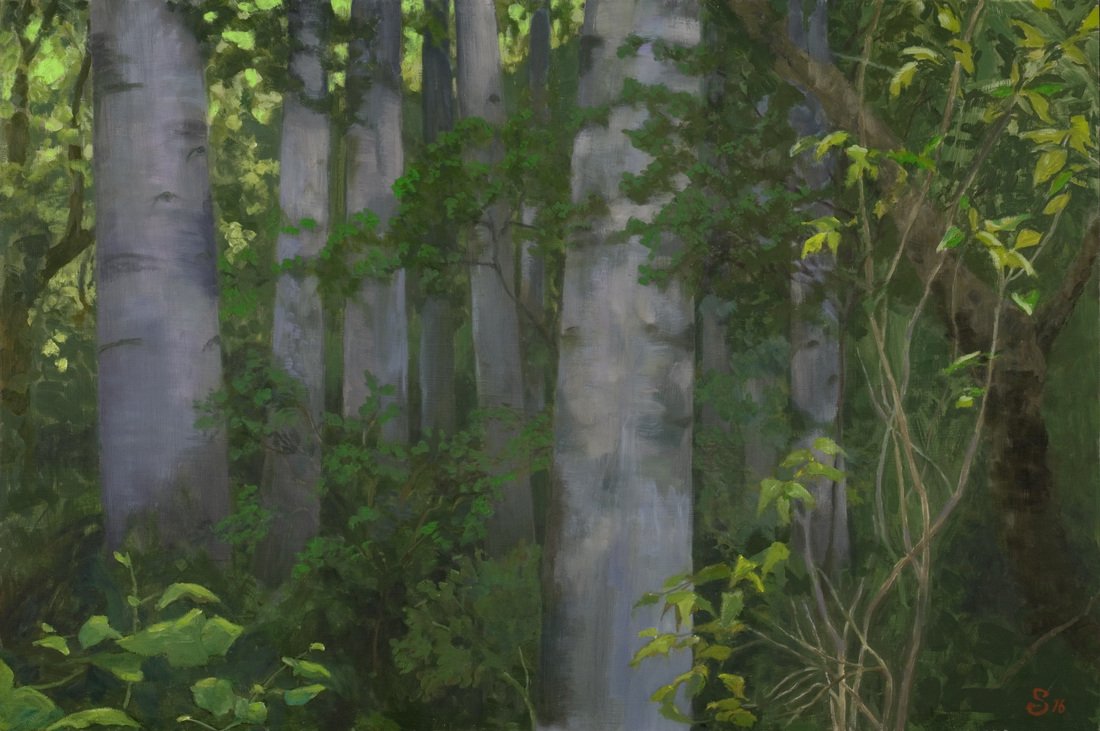Tree Profiles
The trees descriptions are by Les Parks, fellow kayaker and devoted horticulturist from Norfolk, Virginia.
See his blogs “A Tidewater Gardener” and “A Tidewater Paddler”.
See his blogs “A Tidewater Gardener” and “A Tidewater Paddler”.
Boxelder (Acer negundo)
|
Boxelder gets its common name from its wood, which resembles that of boxwood, and from its foliage, which resembles those of some elder species. However, it is actually a maple, though its foliage does not resemble most maples. It also differs from other maples in that it has separate male trees and female trees, rather than having both sexes present on the same plant. Boxelder grows just about anywhere, and is native to much of the United States, including Virginia. It is especially present in the Piedmont and Mountain regions, where it can be easily found along streams, rivers, and in floodplains. Boxelder is an opportunistic tree coming up quickly where the soil has been disturbed. It grows quickly, and is tolerant of many differing conditions, but it is weak-wooded and short-lived. Native Americans made sugar from boxelder sap, and in the absence of sugar maples, pioneers would tap it for syrup. Boxelders provide welcome shelter for birds, as well as food for honeybees, and native pollinators. It is also one of the larval host plants for America’s largest moth, the cecropia silkmoth.
|
Staiger’s additional note: The leaf pattern of the boxelder resembles poison ivy, but the leaflets grow opposite in the boxelder. In poison ivy the leaflets grow on alternate sides of the twiglet. |
Catalpa (Catalpa species)
|
There are two species of catalpa native to North America, southern catalpa (C. bignoniodes), and the larger northern catalpa (C. speciosa), neither of which are native to Virginia. However, having been widely planted here for their ornamental value, they have escaped cultivation, and can now be found growing in fencerows, old fields, disturbed forests, waste sites, and along freshwater riverbanks. Catalpas can be identified by their large heart-shaped leaves, long skinny cigar-like seed pods, and by their beautiful clusters of white flowers, whose petals are dusted with yellow and purple spots. There are a number of insects that feed on catalpa foliage, but one in particular is prized for its legendary ability to attract fish, the catalpa or catawba worm, which is not a worm at all, but the larvae of the catalpa sphinx moth. In parts of the South, a small cottage industry has taken hold where catalpa trees are grown just to provide fisherman with this lucrative bait.
|
American Sycamore (Platanus occidentalis)
|
American sycamore is one of the largest trees in the eastern woodlands of North America, normally reaching 75-100’ tall, but older specimens may top 150’. Allowed to reach full size, the trunks can get over 10’ in diameter. Shenandoah Valley settler, Joseph Hampton was said to have made a hollow sycamore trunk his home in the 1770’s. Chimney swifts also favor hollow sycamores as nesting places, unfortunately suitable candidates have become rare. American sycamores occur naturally throughout Virginia, but are particularly at home in the Mountain and Piedmont regions, along river and stream banks, in floodplains, and on rocky bars. This tree is easily identified by its round fall fruits which look like brown Christmas tree ornaments, and also by its multi-colored exfoliating bark that resembles camouflage. As the tree ages this patchwork bark gives way to reveal a creamy white inner bark, like bleached whale bones in winter.
|
Tulip Poplar/Yellow Poplar (Liriodendron tulipfera)
|
Reaching over 150’ tall, tulip poplar is the tallest deciduous tree species that grows in North America. In fact, the national champ for all deciduous hardwoods in temperate North America is a tulip poplar, and this specimen can be found in the Great Smoky Mountains National Park growing at over 190’ tall. Size, though, is not the only thing to admire about this tree. It has beautiful unusual orange, yellow, and green tulip-like flowers that are more often seen lying on the ground than in the canopy. Tulip poplar foliage turns a handsome clear yellow in the fall, and to be in a forest of them at that time of year is a sublime experience. Despite its name, this tree is not a true poplar, but a member of the magnolia family. It can be found throughout Virginia growing in a variety of environments. However, its preference is for moist bottomlands and floodplain forests. Tulip poplar’s soft wood was valued by Native Americans and early pioneers, who would hollow out single logs to make long lightweight canoes. It is still highly valued commercially, as well as aesthetically.
|




